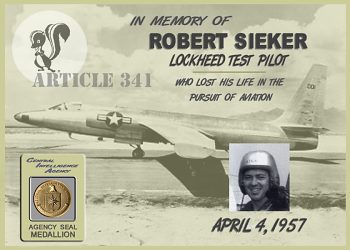
Members of the recovery crew survey the wreckage of the U-2 prototype. Little of the aircraft was salvageable following its spin from 70,000 feet.
 Members of the recovery crew survey the wreckage of the U-2 prototype. Little of the aircraft was salvageable following its spin from 70,000 feet. |
 |